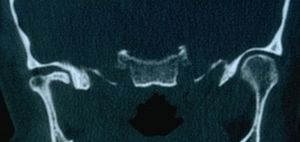Difference between revisions of "'Logic of medical language'"
Tags: Manual revert Visual edit: Switched |
|||
| Line 33: | Line 33: | ||
<center> <div class="colour-button">[[Special:UserLogin&returnto=Introduction+Page|Read the full chapter]]</div> | <center> <div class="colour-button">[[Special:UserLogin&returnto=Introduction+Page|Read the full chapter]]</div> | ||
</center><blockquote> | </center><blockquote> | ||
== Strategic dental topics for authors to subscribe an article == | == [[Strategic dental topics for authors to subscribe an article]] == | ||
Medical Language Complexity, Diagnostic Errors in Medicine, Formal Logic in Medical Terminology, Medical Terminology Ambiguity, Interpretation of Medical Terms, Encrypted Machine Language in Medicine, Clinical Case Study in Medicine, Medical Communication Errors, Semantic Ambiguity in Healthcare, Medical Diagnostics Improvement, Medical Language and Patient Care, Interdisciplinary Medical Diagnostics, Medical Terms and Context, Cryptographic Analogies in Medicine | Medical Language Complexity, Diagnostic Errors in Medicine, Formal Logic in Medical Terminology, Medical Terminology Ambiguity, Interpretation of Medical Terms, Encrypted Machine Language in Medicine, Clinical Case Study in Medicine, Medical Communication Errors, Semantic Ambiguity in Healthcare, Medical Diagnostics Improvement, Medical Language and Patient Care, Interdisciplinary Medical Diagnostics, Medical Terms and Context, Cryptographic Analogies in Medicine | ||
[[Category:SEO Optimization]] | [[Category:SEO Optimization]] | ||
[[Category:Medical Language Documentation]]</blockquote>{{apm}} | [[Category:Medical Language Documentation]]</blockquote>{{apm}} | ||
[[Category:Introduction]] | [[Category:Introduction]] | ||
Revision as of 16:34, 28 April 2024
'Logic of medical language'
Abstract
The abstract of "Logic of Medical Language - Masticationpedia" provides a thorough exploration into the complexities of medical terminology. It highlights how the inherent ambiguities and nuances within medical language can often lead to misinterpretations and diagnostic errors, potentially compromising patient care. This section sets the stage for a deeper investigation into the necessity of formal logic to interpret medical terms accurately, emphasizing the crucial role of context and intent. A detailed clinical case study is introduced to exemplify these points, serving as a practical illustration of the theoretical discussions.
Medical Language Ambiguity
This section delves into the dual nature of medical language, which blends technical terminology derived from various scientific disciplines with elements of natural language. This unique combination, while rich in information, often leads to ambiguity. Such ambiguities can result in different medical professionals — from dentists to neurologists — interpreting the same terms differently, which may lead to divergent and sometimes conflicting diagnoses. The discussion includes specific examples of how common terms like "pain" or "inflammation" can be understood differently based on the specialist’s background, training, and the context in which the terms are used.
The Clinical Case of Mary Poppins
The document presents a fictional yet illustrative case study of "Mary Poppins," a patient who has navigated the medical system for over a decade, interacting with various medical specialties. This case study is utilized to highlight how linguistic ambiguities in her medical reports and doctors' notes have led to a series of varied diagnoses over the years. Each specialist's interpretation of her symptoms, influenced by their respective fields' jargon and diagnostic criteria, demonstrates the practical challenges and consequences of medical language ambiguity.
Encrypted Machine Language and Brain Communication
In this innovative section, the concept of "encrypted machine language" is introduced to describe the complex, often cryptic communication processes between the human brain and medical practitioners. This metaphor extends to comparing these communications to computer cryptography, where decoding errors can significantly alter the outcome. The section discusses how misinterpretations of these "encrypted" signals often lead to incorrect diagnoses, using analogies to explain how the brain’s complex signals can be misunderstood akin to a poorly decrypted message.
Meaning and Ambiguity of Medical Terms
Further exploring the complexities of medical terminology, this section examines how the meanings of medical terms can vary dramatically based on the context in which they are used and the intentions of the person using them. It argues for a need for precision in medical communication and suggests strategies for achieving more accurate interpretations. This includes adopting standardized definitions where possible and promoting clearer communication between interdisciplinary teams.
Final Considerations
The document concludes with a strong advocacy for a paradigm shift in the approach to medical diagnostics. It suggests moving from a symptom-focused diagnostic process to one that seeks to understand the underlying "encrypted machine language" of the body. By doing so, it argues, medical professionals can achieve a more comprehensive understanding of diseases, leading to more accurate diagnoses and improved patient outcomes.
Medical language is an extended natural language
This section highlights the evolutionary nature of medical language, noting its origins in natural language and its expansion through the incorporation of specialized terminologies. The discussion points out that despite its growth, medical language still retains the limitations of natural languages, such as semantic limitations and lack of coherence with new scientific paradigms. The transition from classical to formal logic in medical language is presented not just as an academic necessity but as a critical improvement for clinical practice, potentially reducing errors in diagnostics and patient management.
Clinical case and logic of medical language
Using the ongoing case of Mary Poppins, this expanded section illustrates the tangible impacts of linguistic ambiguity on medical diagnostics. The application of various logical frameworks—classical, probabilistic, fuzzy, and systems logic—to her case demonstrates how each approach can lead to different interpretations and diagnoses. This section serves as a practical demonstration of the theoretical concepts discussed throughout the document, showing the vital role of precise and logical language in medical diagnostics.
Strategic dental topics for authors to subscribe an article
Medical Language Complexity, Diagnostic Errors in Medicine, Formal Logic in Medical Terminology, Medical Terminology Ambiguity, Interpretation of Medical Terms, Encrypted Machine Language in Medicine, Clinical Case Study in Medicine, Medical Communication Errors, Semantic Ambiguity in Healthcare, Medical Diagnostics Improvement, Medical Language and Patient Care, Interdisciplinary Medical Diagnostics, Medical Terms and Context, Cryptographic Analogies in Medicine
particularly focusing on the field of the neurophysiology of the masticatory system
